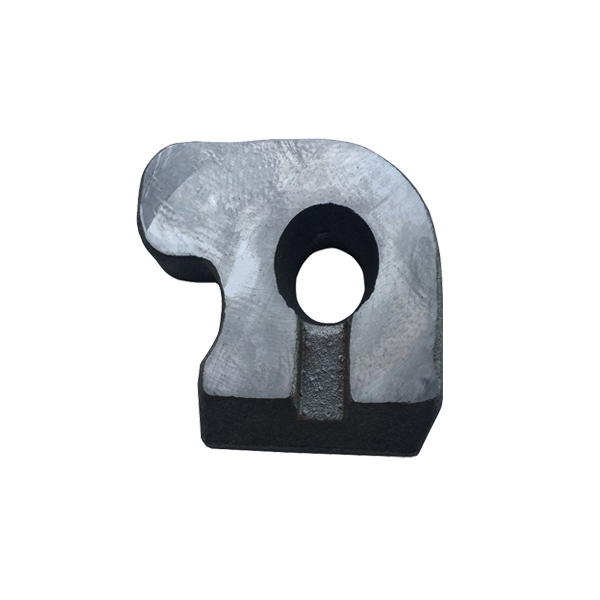What is Investment Casting and Why is It Essential for High-Precision Manufacturing?
2024-12-17
When it comes to producing parts with intricate designs and high precision, investment casting is one of the most reliable and widely used manufacturing processes. But what exactly is investment casting, and why has it become such a crucial method in industries ranging from aerospace and automotive to medical devices and jewelry? In this blog, we will explore the concept of investment casting, how it works, and why it is considered essential for producing complex and high-quality metal parts.
What is Investment Casting?
Investment casting, often referred to as lost-wax casting, is a precision casting process that involves creating a metal part by pouring molten metal into a mold that has been formed around a pattern (usually made of wax). The process is called "lost-wax" because the original pattern is melted away during the casting process, leaving behind a hollow mold for the molten metal to fill.
The steps in the investment casting process include:
1. Pattern Creation: A detailed pattern is made, typically from a material like wax. The pattern is an exact replica of the part to be cast, and it’s designed to withstand the heat involved in the casting process.
2. Mold Building: The wax pattern is then coated in a fine ceramic shell, which is built up layer by layer. This shell is hardened in a furnace to form a solid mold.
3. Wax Removal: Once the ceramic shell is hardened, the mold is heated, causing the wax pattern inside to melt and drain out. This process leaves behind a hollow, ceramic mold.
4. Metal Pouring: The empty ceramic mold is heated to remove any residual moisture before molten metal is poured into the cavity where the wax used to be. The metal is allowed to cool and solidify, taking the shape of the original pattern.
5. Shell Removal: After the metal has cooled, the ceramic shell is broken away, revealing the cast metal part.
6. Finishing: The casting may require additional processes like cleaning, machining, or polishing to achieve the final desired shape and surface finish.
Why is Investment Casting Important?
Investment casting is a highly versatile and precise manufacturing method that is used for a wide range of applications. Here’s why it is an essential process for industries that require detailed, complex, and high-performance parts:
1. Complex Geometries: One of the most significant advantages of investment casting is its ability to produce parts with highly complex geometries that would be difficult or impossible to achieve with other manufacturing methods like forging or machining. Intricate designs with thin walls, undercuts, and internal cavities can be easily created, making investment casting ideal for parts that require fine detail.
2. High Precision: Investment casting allows for the creation of parts with very tight tolerances, which means that the finished product can often be used without the need for additional machining or adjustments. This precision is crucial in industries like aerospace and medical devices, where the smallest variations can result in failure or reduced performance.
3. Wide Range of Materials: Investment casting can be used with a variety of metals, including stainless steel, aluminum, titanium, and various alloys. This flexibility makes it suitable for industries that require materials with specific properties, such as high strength, heat resistance, or corrosion resistance.
4. Cost-Effective for Small Runs: Although investment casting is typically associated with large-scale production, it can also be highly cost-effective for low to medium volume production runs. The ability to create detailed, complex parts without the need for expensive tooling or molds makes it a great option for smaller production runs or prototypes.
5. Minimal Material Waste: Unlike other casting methods that may produce excess material that needs to be trimmed or discarded, investment casting is a near-net-shape process. This means that the final product is almost the same shape as the mold, minimizing material waste and reducing the overall cost of raw materials.
6. Strong and Durable Parts: Investment casting creates parts with excellent mechanical properties and strength, making them suitable for high-performance applications. The process is especially useful for creating parts that need to withstand harsh environments, high temperatures, or heavy loads.
Applications of Investment Casting
Investment casting is used in a wide range of industries due to its ability to create precise, high-quality components. Some of the most common applications include:
1. Aerospace: Aerospace components often require high strength and precision, making investment casting an ideal choice. Parts like turbine blades, engine components, and structural parts can be manufactured using this process to meet the stringent requirements for performance and safety.
2. Automotive: Investment casting is used to create components such as engine parts, exhaust systems, suspension components, and gears that need to be lightweight yet strong enough to handle the stresses and strains of daily use.
3. Medical Devices: In the medical field, investment casting is used to produce surgical instruments, implants, and prosthetics. The high precision and material options make it suitable for creating parts that need to meet strict hygiene standards and provide reliable performance.
4. Jewelry: The jewelry industry has long utilized investment casting for creating intricate and delicate designs. Wax models are made to form detailed patterns for rings, pendants, and other fine jewelry pieces, making it possible to produce unique and highly detailed items in precious metals like gold, silver, and platinum.
5. Industrial Equipment: Many industrial machinery parts, such as valve bodies, pump components, and gearboxes, are made using investment casting. These parts often need to be durable, resistant to corrosion, and able to withstand high pressures, all of which investment casting can provide.
6. Marine: Investment casting is used to manufacture parts for the marine industry, such as propellers, hull components, and engine parts. These parts need to be corrosion-resistant and capable of handling harsh underwater environments.
Advantages and Disadvantages of Investment Casting
#Advantages:
- Flexibility in Design: Investment casting is suitable for both simple and complex part designs.
- High Precision: The process allows for tight tolerances and detailed features without the need for significant post-processing.
- Wide Material Compatibility: Can be used with a variety of metals and alloys, allowing manufacturers to select the most suitable material for their applications.
- Low Waste: Minimal material waste is generated, which can result in lower material costs.
#Disadvantages:
- Costly Setup: The initial pattern-making and mold creation can be expensive, especially for large or complex parts.
- Limited to Metal Parts: Investment casting is specifically designed for metals and cannot be used for plastic or other non-metallic materials.
- Production Time: The process can be time-consuming, especially when multiple layers of coating and heating are required to form the mold.
Conclusion
Investment casting is a highly versatile and effective manufacturing process, especially for producing high-precision parts with complex designs. It offers numerous advantages, such as the ability to use a wide range of materials, achieve tight tolerances, and minimize material waste. Whether you are producing aerospace components, medical devices, or intricate jewelry, investment casting plays a critical role in industries that require durability, precision, and performance. Despite the higher initial setup costs, the process is often the best solution for creating parts that cannot be made with traditional manufacturing methods, making it a go-to choice for high-quality metal production.



